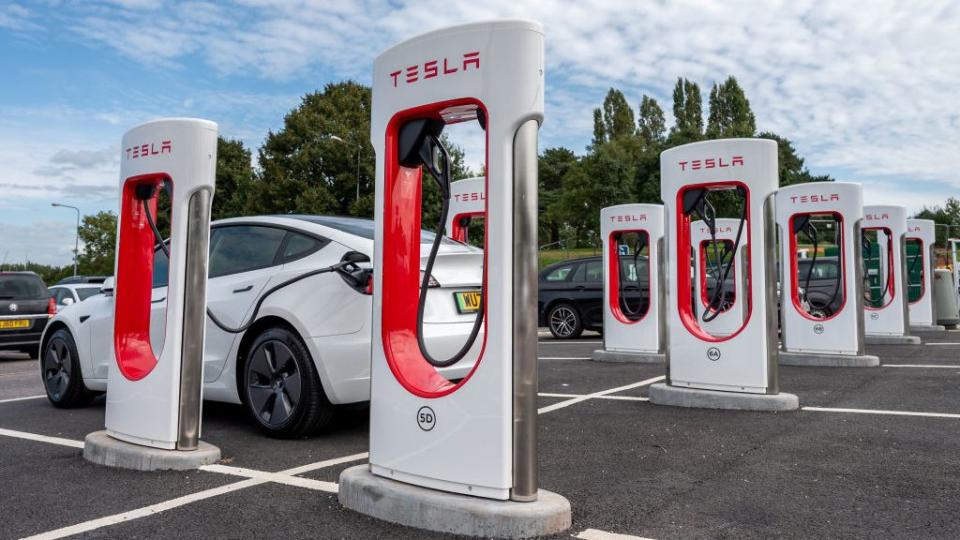Feds Want to Ensure They Are Funding the Latest EV Chargers

The Biden administration is seeking information about the types of connectors used at federally funded EV chargers.
SAE has standardized Tesla’s North American Charging Standard connector as J3400, making it possible for any supplier to use, manufacture, and deploy the NACS connector.
Tesla competitors will begin switching to the J3400 connectors in 2025, as major automakers have announced plans to adopt the revered Tesla Supercharger-style connector.
There’s a pretty good chance that your next electric vehicle, Tesla or no, will plug in directly to J3400 rechargers. Will these charging station plugs be easy to find on a cross-country trip?
That’s what the Biden administration’s Department of Transportation is trying to find out with a new request for information (RFI) issued by its Federal Highway Administration this week.
The RFI announced Wednesday “focuses on the types of connectors used at federally funded EV chargers,” the FHWA announced in a press release.
“Current federal requirements allow for alternative types of connectors on all federally funded DC fast chargers so long as there is also a Combined Charging System (CCS) connector.
“However, SAE International recently standardized the North American Charging Standard (NACS) connector as standardization J3400 (trademark), making it possible for any supplier or manufacturer to use, manufacture, and deploy the NACS connector.”
That’s the revered Tesla Supercharger-style connector, which SAE adapted as the NACS on June 7, 2023. Perhaps the White House wants to make sure the non-Supercharger suppliers will have the new standard well-covered as new stations are built.
Ford Motor Company was first to announce, in November 2022, its future EVs would convert to Tesla’s J3400. General Motors, Rivian, then “everyone else” quickly followed suit, according to The Verge. Stellantis was the final holdout among the majors, announcing just last month it would also go with J3400.
Charger manufacturers, too, are switching to the J3400 NACS, offering hope they will quickly catch up with Tesla Superchargers’ reputation for quality, reliability, and ease of use.
Non-Tesla EVs that have switched to the NACS will be able to hook up to Supercharger-branded chargers as well.
“As EV charging technology continues to rapidly evolve, we want to ensure our federal standards for EV charging keep pace with private sector innovation, adapt to a quickly evolving industry, and meet the needs of EV drivers,” FHWA Administrator Shailen Bhatt said in a press release.
The FHWA will take comments in response to the RFI until April 5. Tesla competitors will begin switching to the J3400 connectors in 2025, and they are expected to make adapters available for their current EV customers as early as this spring.
The FHWA in January announced it has awarded $623 million in Bipartisan Infrastructure Law funding in the first round of the Charging and Fueling Infrastructure grant program, for 47 projects in 22 states plus Puerto Rico. This is expected to add about 7500 EV charging ports across the nation.
There should be some urgency to expand the number of charging ports and stations across the US, as lack of charging infrastructure is considered a key contributor to the slowing of EV demand nationally since last summer.
The Biden administration may have less than a year to see these chargers installed, as ex-President Trump has made it clear he will kill such environmental initiatives in favor of more domestic oil drilling if he wins the November election.
If the federal government works quickly enough to install more Tesla style chargers across America, do you think EV sales will get a boost? Please comment below.

 Yahoo Autos
Yahoo Autos 